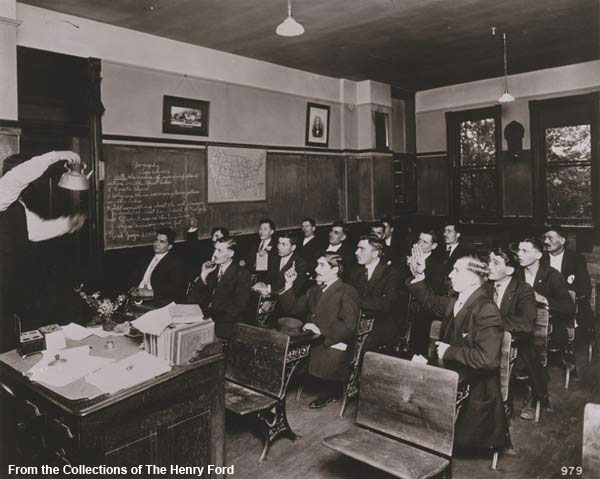This post is intended as an abstract / scaffold for a longer position paper on the role of open education, the Free / Libre / Open source software (FLOSS) movement, open access and open technologies in re-mediating assessment. In this post, I identify some key principles of what, for the sake of brevity, I'll label the "open resource(s) movement" (ORM). In general, while FLOSS, open educational resources, and open access movements focus on different aspects of culture, they are linked theoretically to one key tenet: Making materials available to all benefits everybody.
Abstract: Relevant Big Ideas of the open resource(s) movementWe embrace the ethos of the open education movement. The ethos of open education also helps us to approach all three of the concerns identified in NML’s white paper: The participation gap, the transparency problem, and the ethics issue. The key tenet, that education can be improved by making educational assets visible and accessible and by harnessing the collective wisdom of a community of practice and reflection. The work of integrating participatory practices and accompanying assessment approaches into the formal classroom is an effort to address the three key concerns, and opening up access and assets to all learners and teachers can help in this regard.
We embrace the design approach inherent in the open education movement. As Casserly and Smith point out, open access is the most obvious but not the sole key feature of open educational resources:
Fully open educational resources provide a license that grants permission to users not only to read the material but also to download, modify, and post it for reuse. Users are empowered to change the materials to meet their own needs. They can mix and remix. The capacity and right to reuse materials is an important step in providing users all over the world the opportunity to actively participate…. Reuse also makes possible continuous cycles of improvement of educational materials as users quickly provide critical reactions and evaluations to developers of the quality and effectiveness of the materials. These fast feedback loops of users and developers create an environment for the improvement of content similar to the environment of open source software.
In designing a social network that presents a participatory, spreadable, and open approach to learning, knowing, and teaching, we intend to leverage the affordances of open educational resources to support innovative design and circulation of innovative teaching practices.
We embrace an undergirding principle of the F/OSS Movement that Clay Shirky identifies in Here Comes Everybody: That the F/OSS movement is so powerful because it relies on a “failure for free” model. As I explain
"what open source can teach us about failure",
It's not, after all, that most open source projects present a legitimate threat to the corporate status quo; that's not what scares companies like Microsoft. What scares Microsoft is the fact that OSS can afford a thousand GNOME Bulgarias on the way to its Linux. Microsoft certainly can't afford that rate of failure, but the OSS movement can, because, as Shirky explains, “open systems lower the cost of failure, they do not create biases in favor of predictable but substandard outcomes, and they make it simpler to integrate the contributions of people who contribute only a single idea.”
Anyone who's worked for a company of reasonable size understands the push to keep the risk of failure low. "More people," Shirky writes, "will remember you saying yes to a failure than saying no to a radical but promising idea." The higher up the organizational chart you go, the harder the push will be for safe choices. Innovation, it seems, is both a product of and oppositional to the social contract.
Working from a “failure for free” approach to designing and spreading “successful” teaching practices offers a useful place to consider the role of high-stakes testing and other accountability measures alongside of the issue of how best to prepare learners for the new valued mindsets and skillsets afforded and supported by participatory media.
We need to consider how the notion of spreadability as described by Jenkins et al. aligns and conflicts with the ideals of the F/OSS ethos. In some significant ways, the notion of “spreadability” as described by Jenkins et al. seems at odds with at least some of the tenets and ideals of the F/OSS and open education movements. (Again, I’ve written some about this in a recent blogpost,
"what open source can teach us about spreadability". Specifically, Jenkins et al. describe a tension between a “commodity culture” and a “gift economy.” Briefly, the a gift economy is the phenomenon of building social structures and social capital around the giving and receiving of gifts, whereas commodity culture considers the cash value of all goods and services.
As Jenkins et al. point out, in a culture where commodity culture and the gift economy collide (they give the example of the language of "file sharing" vs. "software piracy"),
[f]ocusing on...spreadability may thus offer us some tentative first steps towards renegotiating the social contract between media producers and consumers in a way which may be seen as legitimate and mutually rewarding to all involved.
In general, despite the relatively obvious conflicting interests of these two value systems, both define themselves in terms of “success”: A successful gift is one the giver values, and it therefore “buys” you cultural capital. A successful commodity is one the buyer wants, and is therefore willing to spend money on. The notion of "spreadability" relies on an assumption that content spreads when it is of value to a community--that is, when a person thinks other people like her will enjoy a certain link, commercial, song, product, and so on. Producers of content are hard at work analyzing that inscrutable kernel of a thing that makes it valuable.
This is a fantastic way of thinking through the issues tied to sticky and spreadable media, but not quite so applicable to the open source ethos where you get "failure for free." Indeed, OSS is premised on the foundational need for failure in order to arrive at success.
Additionally, in the F/OSS movement spreadability matters very little or not at all, because--and this is essential--there is no money to be made, and therefore no conflict between producers and consumers. In fact, as Shirky explains, the most successful OSS product of all time, Linux, succeeded precisely because its key developer, Linus Torvalds, made it clear from the beginning that he did not intend to make money off of the result.
We embrace the notion of a “teaching commons” and the struggles inherent in developing and circulating the knowledge offered therein. As Huber and Hutchings describe this in “What’s Next for Open Knowledge?”, a teaching commons is “’an emergent conceptual space for exchange and community among faculty, students, administrators, and all others committed to learning as an essential activity of life in contemporary democratic society’ (Huber and Hutchings, 2005, p. 1). In this commons, one can find a growing set of resources for and about teaching and learning, produced not only by pedagogical specialists, but by teachers and learners of all kinds.”
A key concern for the future of the teaching commons, as Huber and Hutchings explain, is the issue of “open knowledge in an era of accountability.” The authors are concerned about
how to maintain a space for educational experimentation and exchange in a period that seems headed for increasingly bottom-line forms of accountability, with its concomitant calls for institutions to make evidence of student learning outcomes available to the public….
At one level, the value of evidence is something that any responsible educator would share. Faculty care about their students, and they want to know that the resources they find in the teaching commons will serve those students well. The danger comes when high stakes constrict people’s ability or willingness to explore new pedagogical ideas (Shulman, 2007).
The authors here are focused on accountability in higher education, and we would argue that the problem is even more acute at the secondary education level, where high-stakes testing and NCLB can leave innovative teachers feeling hamstrung by the need to meet accountability demands. Our work on re-mediating assessment practices to align with the new valued literacy practices supported by participatory media is an effort to provide teachers with the support they need to integrate participatory practices into their classroom and meet the real needs of the formal classroom.






















